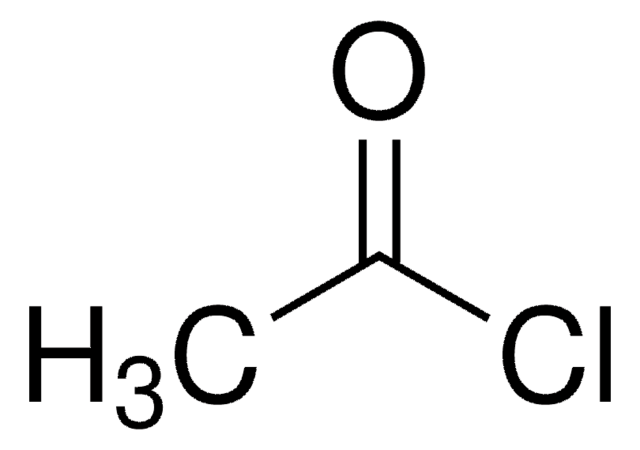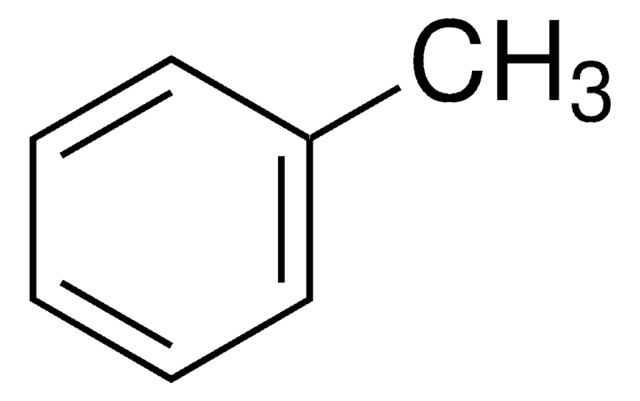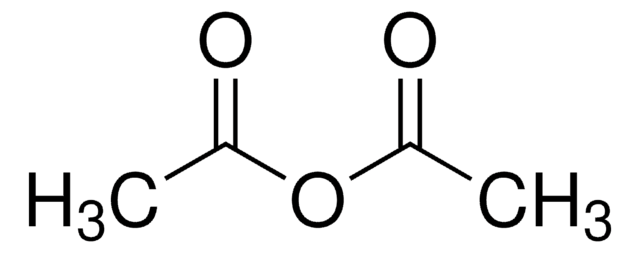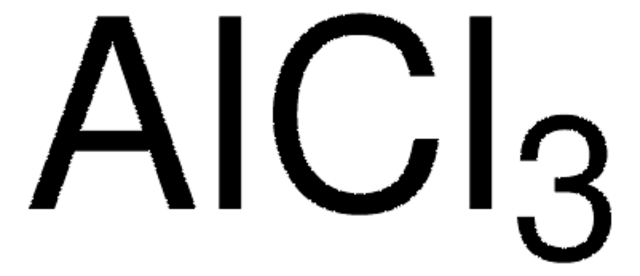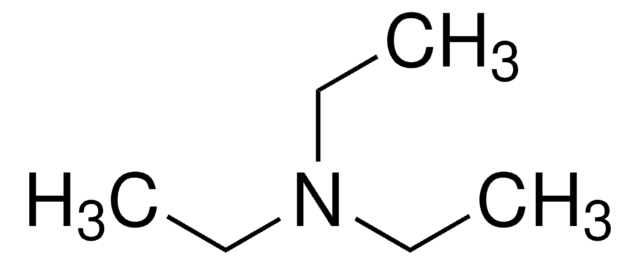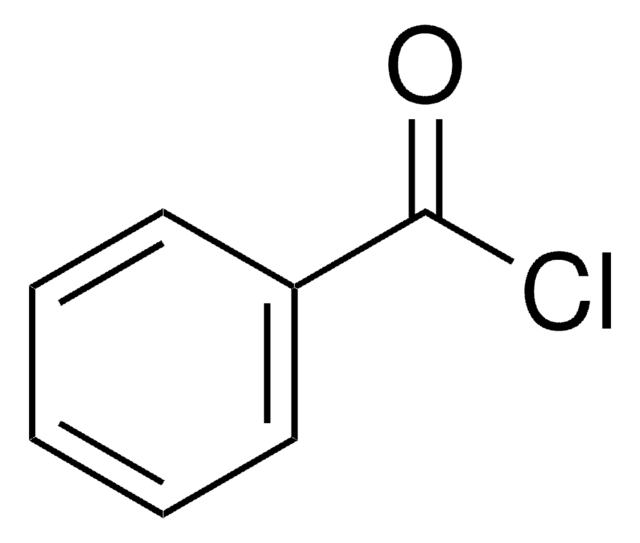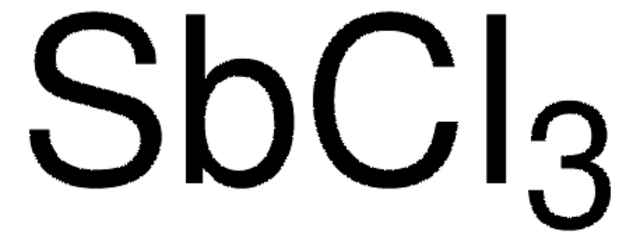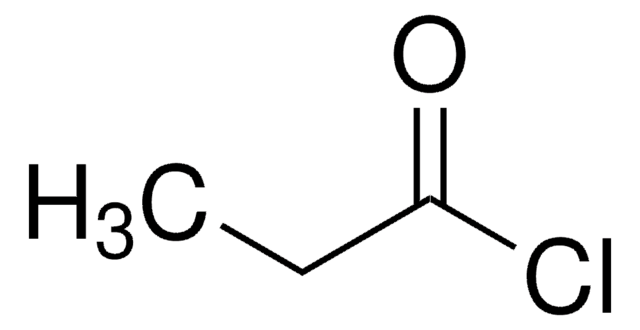114189
Acetyl chloride
reagent grade, 98%
Synonym(s):
Acetic acid chloride, Acetic chloride, Ethanoyl chloride
Sign Into View Organizational & Contract Pricing
All Photos(3)
About This Item
Linear Formula:
CH3COCl
CAS Number:
Molecular Weight:
78.50
Beilstein/REAXYS Number:
605303
EC Number:
MDL number:
UNSPSC Code:
12352100
eCl@ss:
39050501
PubChem Substance ID:
NACRES:
NA.21
Recommended Products
grade
reagent grade
Quality Level
vapor density
2.7 (vs air)
vapor pressure
11.69 psi ( 20 °C)
32.33 psi ( 55 °C)
assay
98%
form
liquid
autoignition temp.
1353 °F
expl. lim.
19 %
refractive index
n20/D 1.389 (lit.)
bp
52 °C (lit.)
mp
−112 °C (lit.)
density
1.104 g/mL at 25 °C (lit.)
SMILES string
CC(Cl)=O
InChI
1S/C2H3ClO/c1-2(3)4/h1H3
InChI key
WETWJCDKMRHUPV-UHFFFAOYSA-N
Looking for similar products? Visit Product Comparison Guide
Related Categories
General description
Acetyl chloride is used as an acylating reagent for electrophilic acetylation of alkynes, alkenes, arenes, saturated alkanes, enolates, and organometallics.
Acetyl chloride is a colorless acyl halide. On reaction with ammonia and alcohols, it affords acetamide and esters of acetic acid, respectively. Structural parameters and rotational constants of its isotopic forms have been evaluated from the microwave spectral investigations.
Acetyl chloride is a colorless acyl halide. On reaction with ammonia and alcohols, it affords acetamide and esters of acetic acid, respectively. Structural parameters and rotational constants of its isotopic forms have been evaluated from the microwave spectral investigations.
Application
Acetyl chloride has been used in the Lepage and Roy fatty acids analysis, and robotic fatty acid analysis. It may be used for the qualitative in situ synthesis of hydrogen chloride.
signalword
Danger
hcodes
Hazard Classifications
Eye Dam. 1 - Flam. Liq. 2 - Skin Corr. 1B
supp_hazards
wgk_germany
WGK 1
flash_point_f
41.0 °F
flash_point_c
5 °C
Choose from one of the most recent versions:
Already Own This Product?
Find documentation for the products that you have recently purchased in the Document Library.
Customers Also Viewed
Yu Hong Lin et al.
Lipids, 47(5), 527-539 (2012-03-21)
Large population studies show that polyunsaturated fatty acids are important for human health, but determining relationships between the health benefits and the fatty acid content has been hampered by the unavailability of labor-effective high-throughput technologies. An automated high throughput fatty
Microwave spectrum of acetyl chloride.
Sinnott, KM.
J. Chem. Phys. , 34(3), 851-861 (1961)
Acetyl Chloride-Methanol as a Convenient Reagent for: A) Quantitative Formation of Amine Hydrochlorides B) Carboxylate Ester Formation C) Mild Removal of Nt-Boc-Protective Group.
Nudelman A, et al.
Synthetic Communications, 28(3), 471-474 (1998)
Eagleson M.
Concise Encyclopedia Chemistry, 4-4 (1994)
Yu-Ting Liu et al.
The journal of physical chemistry. A, 114(27), 7275-7283 (2010-06-24)
In one-photon dissociation of gaseous acetyl chloride at 248 nm, time-resolved Fourier-transform infrared emission spectroscopy is used to detect the fragments of HCl, CO, and CH(2) in the presence of Ar or O(2). The high-resolution spectra of HCl and CO
Our team of scientists has experience in all areas of research including Life Science, Material Science, Chemical Synthesis, Chromatography, Analytical and many others.
Contact Technical Service